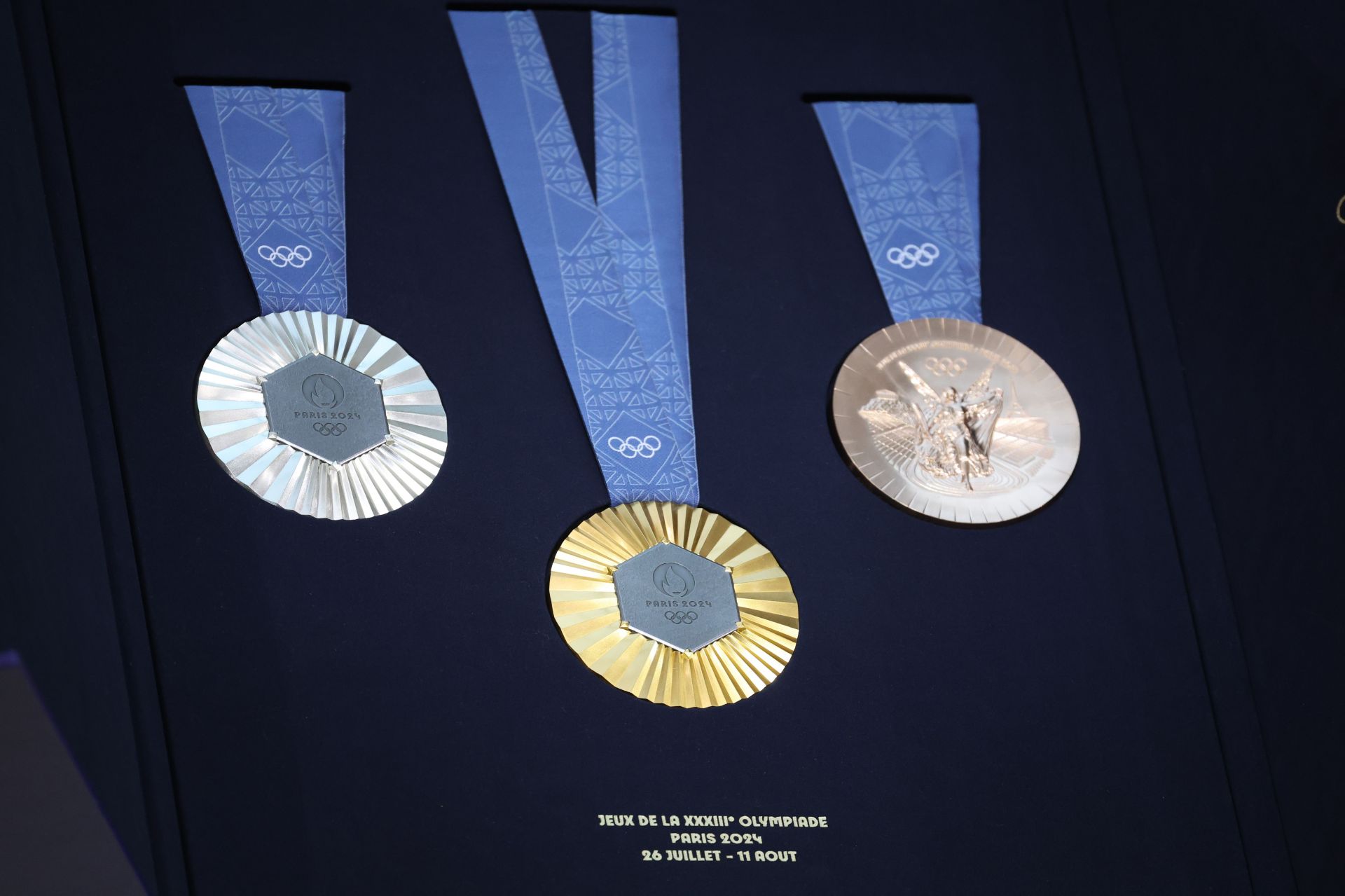
How were the Paris 2024 Olympics medals designed?
At the ongoing Paris 2024 Olympics, every athlete who wins a medal will be taking home more than just the medal. The coveted Olympic medal is probably the most prestigious of prizes in all of sport that an athlete aspires to win. The significance of an Olympic medal is an indicator of a sportsperson's caliber and pedigree.
Both Olympic and Paralympic medalists at the Paris 2024 Olympics will, in fact, be taking with them an actual piece of the iconic Eiffel Tower.
All medals that will be presented will carry a piece of iron from the famed French monument. This piece of iron comes from when the Eiffel Tower, which stands tall in Paris, underwent renovations in the 20th century. These original iron pieces were since kept in storage.
The iron, which is made in a way that represents France's hexagonal shape, will be located in the middle of the Olympic medal and have the Paris 2024 Games symbol. Eighteen grams of iron renovation pieces from the monument are included in each medal.
The medals have been designed by the French luxury jewelry brand Chaumet and are engraved with the name of the sport and the discipline in which it is won. The event will be mentioned along its edge. The ribbon attached to the medal is inspired by the latticework of the Eiffel Tower.
The rich history behind the coveted Olympic medal and a first at the Paris 2024 Olympics
The tradition of awarding a gold, silver, and bronze medal to the top three finishers goes back a century, beginning at the St Loius. Olympic Games in 1904. These medals are an indicator of achieving excellence at the quadrennial event.
The responsibility of designing the medals for a particular edition of the Summer Games lies with the organizing committee of the host nation. Since Athens 1896, the first modern Olympic Games, a total of roughly 36,600 medals have been awarded.
However, France using a piece of the Eiffel Tower at the Paris 2024 Olympics makes it the first time that a piece of a national monument is being used.